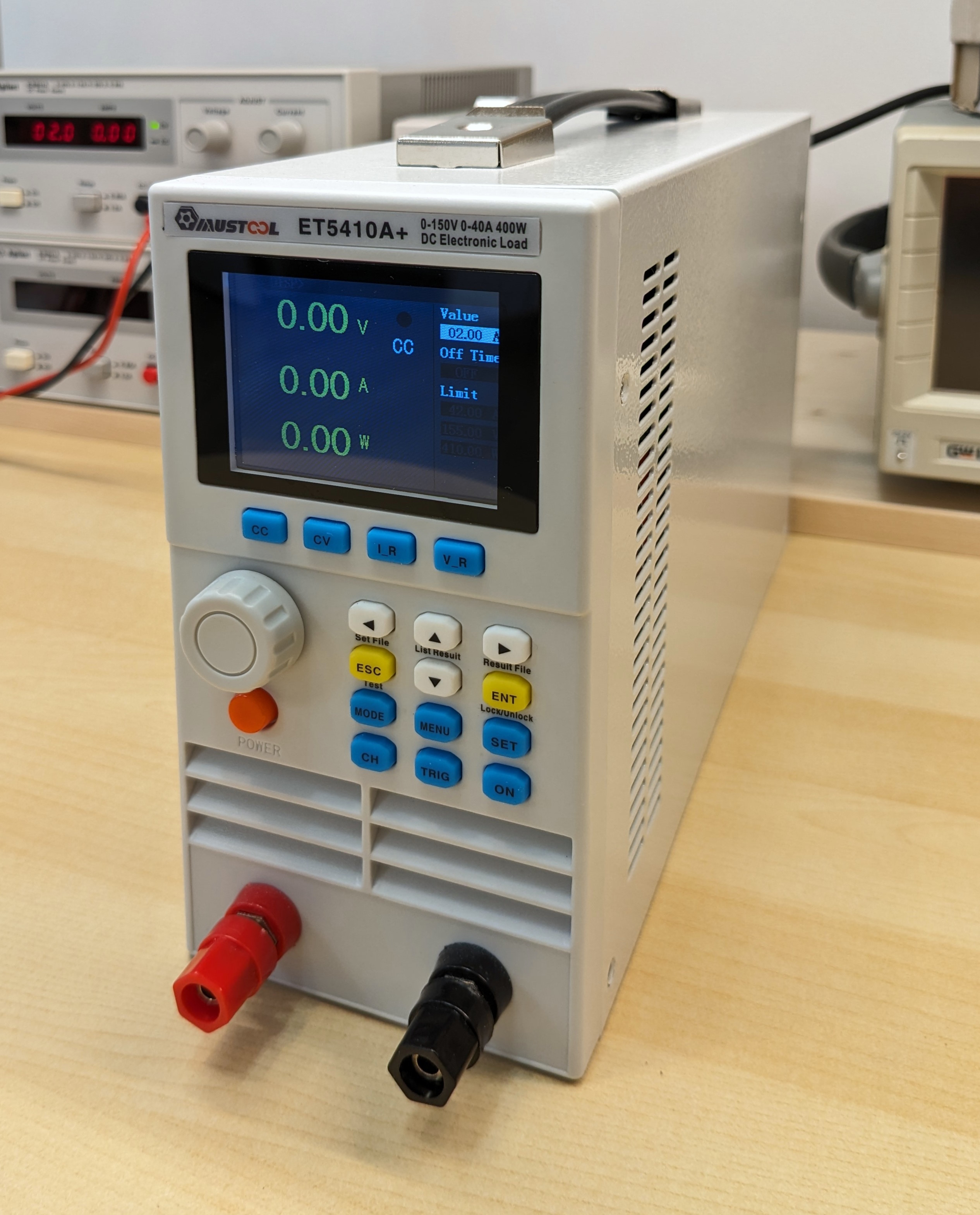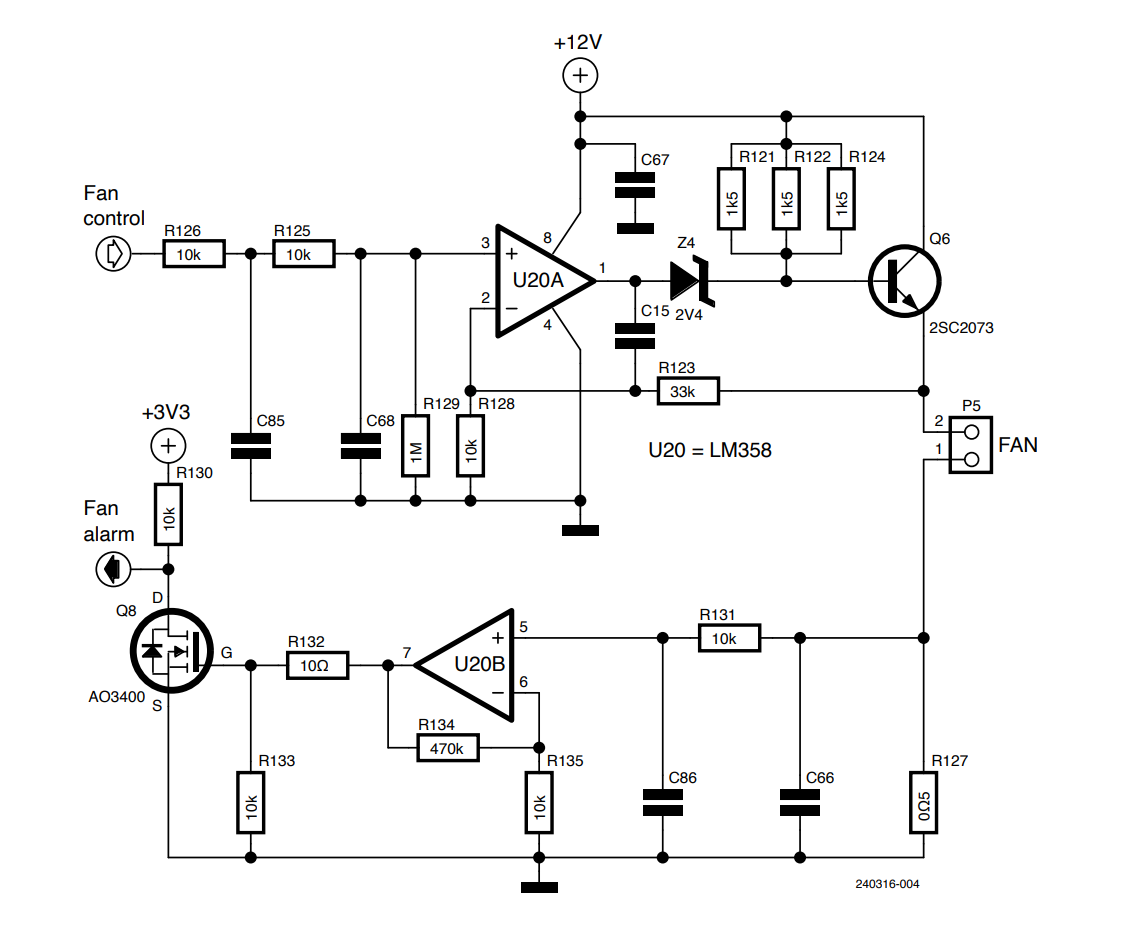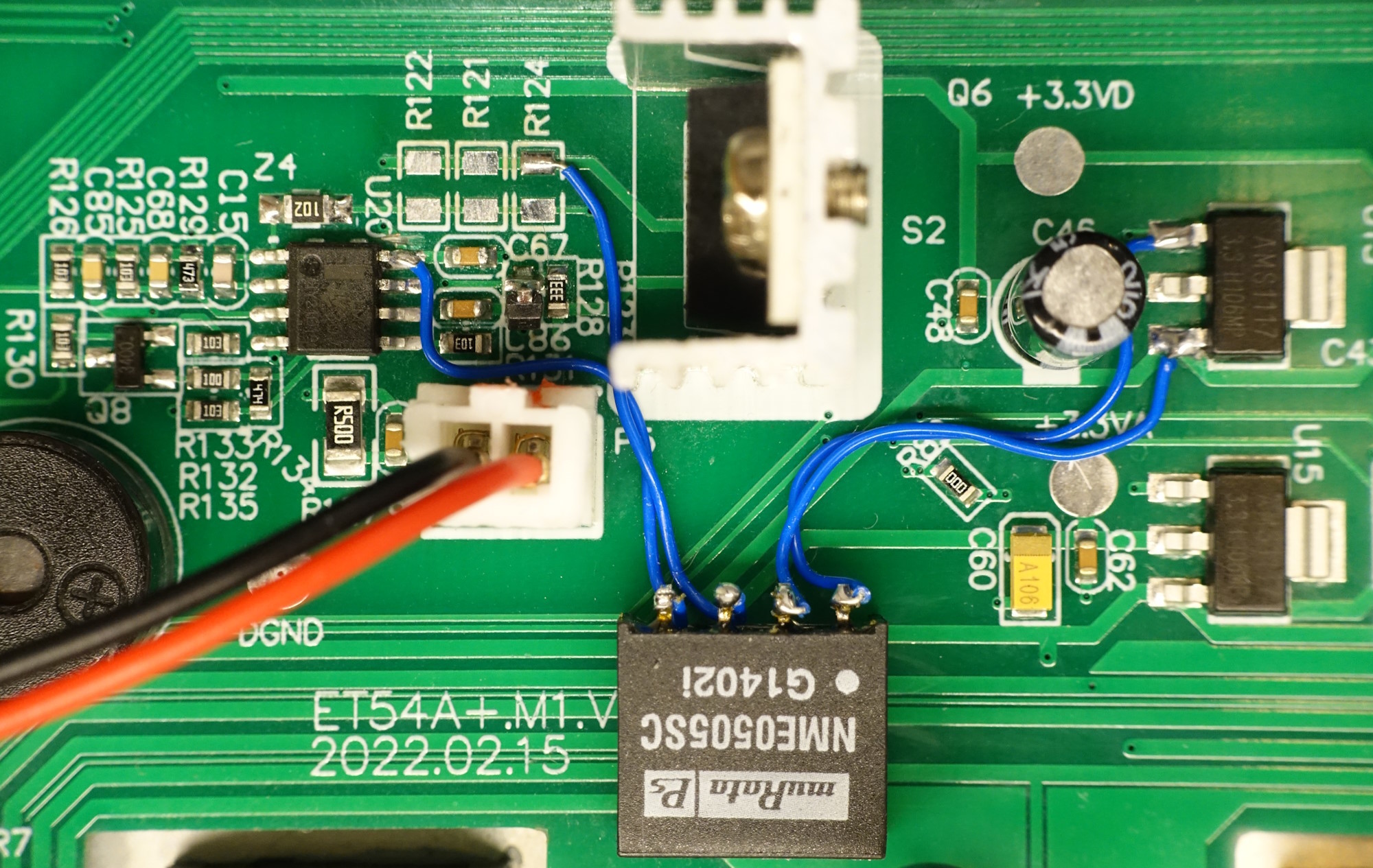A Less Noisy DC Load

Read how I modified the ET5410A+ for both quieter operation at light loads and better performance at full throttle.
The ET5410A+ is a budget-friendly DC load that works well, but unfortunately comes with an annoyingly loud fan even when using the unit at small currents. As always, I didn’t really manage to keep it simple and decided to investigate and modify the circuit instead. Fan speed is controlled by the main microcontroller based on dissipated power, with three speed levels, but the steps are weirdly spaced: idle speed is quite high, and max speed is comparatively not that high. A look at the control circuitry showed a few design oddities. The fan is powered by a variable linear regulator instead of PWM, there’s an NPN transistor on the positive rail which can never fully saturate, and a few other questionable choices. I hoped that a few tweaks could make a big difference without a full redesign.

Simply swapping the fan for another, quieter one wasn’t very practical due to how the load is mechanically constructed. Instead, I tried to make a few modifications to the control circuit. A diode was added to the feedback path to create a 0.7 V offset and introduce non-linearity, thus shifting the low-speed without affecting higher speeds. A minor change of resistor values was also required for that. To fix the “low” maximum speed, a small DC-DC converter module was used to bump the op-amp’s supply voltage up to 17 V, letting the transistor fully saturate and feed the fan close to its rated 12 V. After these changes, noise at idle dropped significantly, and cooling at high load improved as well, that’s a win-win!

Of course, the final step is testing. To ensure the load could still handle heat safely at lower fan speeds, I applied a prolonged 125 W load while monitoring heatsink temperature. The built-in safety system kicked in when needed, ramping up the fan intelligently. No alarming behavior was observed, even at higher loads. Mission accomplished! Of course, more sophisticated upgrades are possible, such as replacing the control system with another microcontroller or dedicated fan controller ICs, but these would be much more complex than needed. The focus here was keeping changes simple, and it worked well enough.

The ET5410A+ is far from perfect, but at its price point, it remains an attractive choice. For those interested in extending the functionality further, software like Test Controller offers powerful PC-based automation and data logging. You can find more about this little project here.



Diskussion (1 Kommentar)